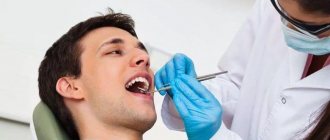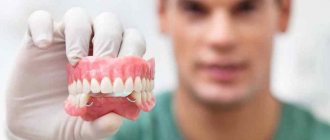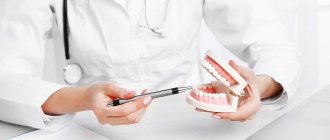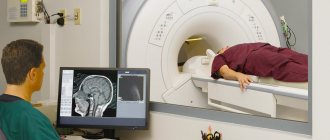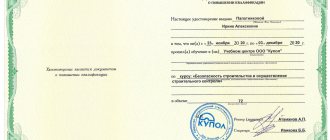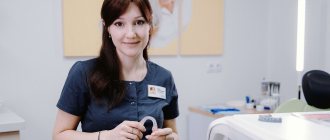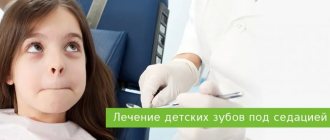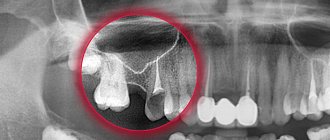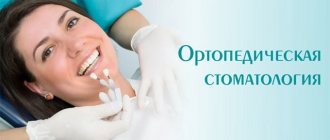| [organizational and legal form, name of organization, enterprise] | I approve [position, signature, full name of the manager or other official authorized to approve the job description] [day month Year] M.P. |
Job description of an orthopedic dentist [name of organization, enterprise, etc.]
This job description has been developed and approved in accordance with the provisions of the Labor Code of the Russian Federation, Decree of the Government of the Russian Federation of February 14, 2003 N 101 “On the length of working hours of medical workers depending on the position and (or) specialty they occupy”, resolutions of the State Committee for Labor of the USSR and Presidium of the All-Union Central Council of Trade Unions dated October 25, 1974 N 298/P-22 “On approval of the list of industries, workshops, professions and positions with hazardous working conditions, work in which gives the right to additional leave and a shortened working day” and other regulations, regulating labor relations.
General provisions
1.1. An orthopedic dentist belongs to the category of specialists and is directly subordinate to [name of the immediate supervisor].
1.2. A person who has a higher medical education, has completed postgraduate training or specialization in the specialty “Orthopedic Dentistry”, and has worked in the field of professional activity for at least [value] years is accepted for the position of an orthopedic dentist.
1.3. An orthopedic dentist should know:
— laws of the Russian Federation and other regulatory legal acts in the field of healthcare;
— content of orthopedic dentistry as a separate clinical discipline;
— topographic anatomy of the maxillofacial region, features of blood supply, innervation and lymph flow, structure of teeth and jaws, dentofacial anomalies;
— basic issues of normal and pathological physiology of the dental system, its relationship with the functional state of other body systems and the levels of their regulation;
- biomechanics of chewing, age-related changes in the maxillofacial area, features of the influence of the external and internal environment on it;
— clinic and methods of orthopedic treatment of pathology of hard dental tissues, periodontal diseases, pathological abrasion, pathology of the temporomandibular joint;
— principles of prevention, diagnosis and treatment for dentoalveolar deformities and anomalies of teeth and jaws;
— indications and contraindications for the use of x-ray and other special examination methods;
— indications for dental prosthetics, principles of preparing the oral cavity and dentofacial apparatus for orthopedic interventions;
— morphological changes in the dental system during orthopedic and orthodontic interventions;
— mechanism of action, design principles and features of manufacturing technology of orthodontic and orthopedic devices and prostheses;
— adaptation to dentures and prosthetic devices and principles of aesthetic and phonetic correction;
— types of modern equipment, instruments and materials used in dentistry;
— rules for action when detecting a patient with signs of particularly dangerous infections, HIV infection;
- resuscitation techniques;
— basics of asepsis and antiseptics;
— methods of sterilization of instruments;
— first aid methods for bleeding, collapse, anaphylactic shock;
— basics of epidemiology;
— basics of valeology and sanology;
— medical ethics and deontology;
— psychology of professional communication;
— basics of clinical examination;
— basics of disaster medicine;
— the procedure for maintaining primary accounting and reporting documentation, including in electronic form;
— basics of labor legislation;
— labor protection and fire safety rules.
Job description of an orthopedic dentist
Limited Liability Company "Beta" LLC "Beta"
APPROVED General Director of Beta LLC ___________________ A.I. Petrov
25.10.2016
Job description of an orthopedic dentist
10/25/2016 No. 122-DI
Moscow
1. GENERAL PROVISIONS
1.1. This Job Description defines the job duties, rights and responsibilities of an orthopedic dentist.
1.2. An orthopedic dentist is appointed and dismissed by order of the general director of Beta LLC.
1.3. The orthopedic dentist reports directly to the general director of Beta LLC.
1.4. A person with a higher education – a specialty in the specialty “Dentistry”, who has undergone residency training in the specialty “Orthopedic Dentistry”, professional retraining in the specialty “Orthopedic Dentistry” and has undergone internship/residency training in one of the specialties is appointed to the position of Orthopedic Dentist. – “General Dentistry”, “Dentistry” and having a certificate of accreditation of a specialist in the specialty “Dentistry”, without presenting requirements for work experience. The specified person must undergo advanced training at least once every five years throughout his or her career.
1.5. An orthopedic dentist must know: – the content of orthopedic dentistry as a separate clinical discipline; – the biological role of the dentofacial region, the biomechanics of chewing, age-related changes in the maxillofacial region, features of the influence of the external and internal environment on it; – basic principles of diagnosing infectious diseases, medical indications for hospitalization of patients with infectious diseases; – topographic anatomy of the head, maxillofacial region, features of blood supply, innervation and lymphatic system, structure of teeth, embryology of the dentofacial region, main disorders of embryogenesis; – etiology, pathogenesis, diagnosis of common diseases; – the relationship between the structure and functioning of the dental system and disorders of the nasopharynx, respiratory and digestive systems, and the musculoskeletal system – the main issues of normal and pathological physiology of the dental system, its relationship with the functional state of other body systems and the levels of their regulation; – methods for diagnosing diseases of the temporomandibular joint, salivary glands in children and adults; – normal structure of teeth, jaws and structural abnormalities due to dental and facial anomalies; – clinical picture, diagnostic methods, classification of diseases:
– teeth, periodontal disease, oral mucosa, lips;
– bone tissue of the jaws, peripheral nervous system of the maxillofacial area, temporomandibular joint;
– salivary glands, congenital, acquired anomalies of teeth, dentition, alveolar processes, jaws, face; – clinical manifestations of the main syndromes requiring surgical treatment; – complex relationship between dental health, nutrition, general health, diseases, medication use; – normal functioning of the dental system and disruption of its functions due to malocclusion; – clinical picture, symptoms of major diseases and borderline conditions of the maxillofacial region in adults and children, their diagnosis; – the importance of special and additional research methods for the differential diagnosis of dental diseases; – medical indications and contraindications for the use of x-ray and other methods of additional examination; – medical devices used in dentistry (principles of design and operating rules); – International Statistical Classification of Diseases and Related Health Problems; – the procedure for providing medical care according to profiles; – standards of medical care by disease; – clinical recommendations (treatment protocols) regarding the provision of medical care; – conditions requiring emergency and emergency medical care; – labor protection requirements, fire safety, emergency procedures; – sanitary and epidemiological requirements; – clinical manifestations and course of common diseases, injuries and conditions in elderly and senile patients; – features of medical examination of elderly and senile patients; – structure of morbidity in old and senile age; – methods of using medical devices, chemicals and drugs to control dental plaque; – features of the provision of medical care in emergency and emergency forms for dental diseases; – groups of drugs, their pharmacokinetics, pharmacodynamics, compatibility of drugs; – general and functional methods of treating patients with maxillofacial pathology; – basic principles of treatment of patients with infectious diseases; – clinical picture, symptoms of pathology in the oral cavity, medical indications for the use of various treatment methods; – basic methods of auxiliary surgical treatment of patients with dental anomalies; – clinical picture, main methods of treatment (medical indications, contraindications, complications) of diseases:
– teeth, periodontal disease, oral mucosa, lips;
– bone tissue of the jaws, peripheral nervous system of the maxillofacial region, temporomandibular joint;
– salivary glands, congenital, acquired anomalies of teeth, dentition, alveolar processes, jaws, face; – clinical picture, basic methods of orthopedic treatment of pathology of hard tissues, periodontal diseases, pathological abrasion, pathology of the temporomandibular joint; – morphological changes in the dental system during orthopedic and orthodontic treatment; – clinical picture, symptoms of major diseases and borderline conditions of the maxillofacial region in adults and children, their treatment; – methods of treating dentofacial and facial anomalies in children and adults; – principles, techniques and methods of anesthesia in dentistry; – principles of design and rules of operation of medical products (dental equipment); – modern medical products (equipment, instruments and materials) used in dentistry; – clinical recommendations (treatment protocols) regarding the provision of medical care; – procedures for providing medical care for dental diseases; – standards of medical care for dental diseases; – labor protection requirements, fire safety, emergency procedures; – sanitary and epidemiological standards and requirements; – features of the pharmacokinetics and pharmacodynamics of drugs in elderly and senile patients; – psychological, behavioral characteristics of elderly and senile patients; – features of general and special hygiene of elderly and senile patients; – rules for the use of personal protective equipment; – methodology for performing resuscitation measures; – maintaining medical confidentiality; – medical indications and contraindications for rehabilitation measures for various diseases and pathological conditions; – basic principles of patient rehabilitation:
– with infectious diseases;
– with diseases of the maxillofacial area;
– principles of design and rules of operation of medical products in the category “Dental equipment”; – principles of clinical observation in various categories of patients and among the population; – features of specific and nonspecific prevention of infectious diseases; – features of cancer prevention; – etiology, pathogenesis, prevention of common diseases of the maxillofacial area; – methods for the prevention of dental and facial anomalies in children and adults; – clinical picture, symptoms of major diseases and borderline conditions of the maxillofacial region in adults and children, their prevention; – fundamentals of preventive medicine aimed at improving public health; – basic criteria for a healthy lifestyle and methods for its formation; – social, hygienic and medical aspects of alcoholism, drug addiction, substance abuse, the basic principles of their prevention; – forms and methods of sanitary and hygienic education among the population and medical workers; – basic hygiene measures of a health nature, promoting health and preventing the occurrence of diseases.
1.6. In his activities, the orthopedic dentist is guided by: – laws and other regulatory legal acts in the field of healthcare; – local regulations of Beta LLC, including the Internal Labor Regulations; – rules on labor protection, safety precautions, industrial sanitation and fire protection; – this Job Description.
1.7. During the period of temporary absence of an orthopedic dentist, his duties are assigned to an official appointed by order of the general director of Beta LLC.
2. JOB RESPONSIBILITIES
An orthopedic dentist performs the following job responsibilities: 2.1. Provides medical care for dental diseases: 2.1.1. Carrying out an examination of the patient in order to establish a diagnosis: – initial and repeated examination of patients; – development of an algorithm for making a preliminary diagnosis; – establishing a preliminary diagnosis; – referral of patients:
– for laboratory and instrumental studies;
– for consultation with medical specialists; – development of an algorithm for making a final diagnosis; – making a final diagnosis; – interpretation of the results of collecting information from patients (their relatives/legal representatives); – data interpretation:
– initial and repeated examination of patients;
– laboratory and instrumental studies;
– patient consultations with medical specialists;
– additional examinations of patients (including radiographs, teleroentgenograms, radiovisiograms, orthopantomograms, tomograms (on film and digital media)); – obtaining information from patients (their relatives/legal representatives); – questioning patients regarding their general health status, identifying concomitant diseases; – identification of dental and facial anomalies in patients, deformations and the prerequisites for their development, defects in the crowns of teeth and dentition; identification of risk factors for oncopathology (including various background processes, precancerous conditions).
2.1.2. Purpose, monitoring the effectiveness and safety of non-drug and drug treatment: – provision of emergency and emergency medical care for acute dental diseases, conditions, exacerbation of chronic diseases that pose a threat to the patient’s life or without obvious signs of a threat to the patient’s life; – selection of the type of local anesthesia/pain relief; – assessment of possible complications caused by the use of local anesthesia; – performing physiotherapeutic procedures; – selection of medications for the treatment of dental diseases; – formation of a treatment plan for a patient with dental diseases; – treatment of diseases of the teeth, periodontium, jaw bone tissue, peripheral nervous system of the maxillofacial area, temporomandibular joint, salivary glands; – monitoring the progress of the patient’s treatment; – treatment of diseases of the mucous membrane of the oral cavity and lips, with the exception of specialized treatment for the treatment of precancers of the mucous membrane of the oral cavity and lips; – assessment of possible side effects from taking medications; – drawing up a comprehensive treatment plan; – specialized treatment for caries, non-carious dental diseases, pulpitis, periodontitis, periodontitis, diseases of the oral mucosa, with the exception of precancers; – care for patients with injuries to the maxillofacial area, people with disabilities at home; – consulting the patient on methods of treating dental diseases; – selection of medical products (including dental materials) for the treatment of dental diseases; – surgical assistance during the operation of tooth extraction (excluding impacted and dystopic ones), opening of subperiosteal abscesses during periostitis of the jaws; – orthopedic treatment of persons with defects of teeth, dentition within the limits of temporary prosthetics, prosthetics of single defects of the dentition, prostheses of up to three units (excluding prosthetics on dental implants); – step-by-step sanitation of the oral cavity (excluding sanitation of children under anesthesia); – treatment of primary and permanent teeth; – justification of the most appropriate treatment tactics; – orthopedic treatment of persons with defects of teeth, dentition within the limits of partial and complete removable laminar dentures; – assessment of possible complications caused by the use of treatment methods; – referral of patients for inpatient treatment for dental diseases in the prescribed manner; – elimination of foci of infection and intoxication; – treatment of diseases of the oral mucosa (excluding treatment of children with manifestations of viral, bacterial, allergic and other childhood infections in the oral cavity); – provision of qualified medical care in the specialty using modern treatment methods approved for use in medical practice; – provision of medical care to patients with acute and chronic odontogenic inflammatory processes, exacerbation of chronic diseases of the maxillofacial area
formation of an epicrisis; – provision of emergency and emergency medical care.
2.1.3. Development, implementation and monitoring of the effectiveness of individual rehabilitation programs: – drawing up an individual rehabilitation plan for a patient with diseases of the maxillofacial area; – monitoring the progress of the patient’s rehabilitation; – selection of medications for rehabilitation; – provision of qualified medical care in their specialty using modern rehabilitation methods approved for use in medical practice.
2.1.4. Carrying out and monitoring the effectiveness of sanitary, anti-epidemic and other preventive measures to protect public health: – conducting preventive examinations of the population; – prescription of preventive procedures; – selection of medications for the prevention of dental diseases; – formation of a plan for preventive dental care for the patient; – carrying out measures to reduce morbidity, including infectious diseases, disability, mortality, lethality; – performing preventive procedures for dental diseases; – prevention of diseases of the mucous membrane of the oral cavity and lips, including oncohygienic prevention and secondary prevention of oncological tumors, with the exception of specialized treatment for the treatment of precancers of the mucous membrane of the oral cavity and lips; – selection of medical products in the category “Dental materials” for the prevention of dental diseases; – provision of qualified medical care in their specialty using modern methods of prevention approved for use in medical practice; – brief preventive consultation.
2.1.5. Conducting sanitary and hygienic education among the population and medical workers in order to develop a healthy lifestyle: – formation in patients (their relatives/legal representatives):
– motivation to lead a healthy lifestyle and give up bad habits;
– positive behavior aimed at maintaining and improving health.
2.1.6. Organizational and managerial activities: – provision of medical and statistical indicators in the prescribed manner; – maintaining medical records; – monitoring the implementation of medical prescriptions by medical workers holding positions of mid-level and junior medical personnel; – control (assessment) of the quality of medical care; – conducting an examination of patients’ temporary disability, incapacity to care for a sick child, determining medical indications for employment, transfer to easier working conditions, sanatorium treatment; – management of medical workers holding positions of nursing and junior medical personnel; – drawing up a work plan and report on your work; – analysis of the main medical and statistical indicators (morbidity, disability, mortality, lethality) of the population of the service territory.
3. RIGHTS
An orthopedic dentist has the right: 3.1. Require the General Director of Beta LLC to assist in the performance of official duties and the exercise of rights. 3.2. Improve your skills. 3.3. Request personally or on behalf of the immediate supervisor from employees reports and documents necessary to perform job duties. 3.4. Get acquainted with the draft decisions of the general director of Beta LLC concerning the activities of the orthopedic dentist. 3.5. Submit proposals on issues of its activities for consideration by the General Director of Beta LLC, including raising questions about improving its work, improving organizational and technical working conditions, increasing wages, paying overtime in accordance with the laws and regulations governing the remuneration system employees of Beta LLC. 3.6. Receive from employees of Beta LLC the information necessary to conduct its activities.
4. RESPONSIBILITY
The orthopedic dentist is responsible for: 4.1. For failure to perform or improper performance of their duties provided for in this Job Description - in accordance with current labor legislation. 4.2. For other offenses committed during the period of its activities (including those related to causing material damage and damage to the business reputation of Beta LLC) - in accordance with current labor, civil, administrative and criminal legislation.
5. WORKING CONDITIONS
5.1. The working hours of the Orthopedic Dentist are determined in accordance with the Internal Labor Regulations established by Beta LLC. 5.2. The Employer evaluates the performance of the Orthopedic Dentist in accordance with the Set of Measures for Performance Assessment, approved by order of the General Director of Beta LLC.
The job description was developed in accordance with the order of the General Director of Beta LLC No. 1-Pr dated 06/01/2015.
The job description was:
Head of HR Department _________________________ E.V. Vasilyeva
I have read the instructions:
10.25.2016 ________________ S.V. Yudina
Agreed:
Lawyer _________________________ N.A. Pavlov
25.10.2016
Job responsibilities
Orthopedic dentist:
2.1. Performs initial patient visits. Determines the tactics of patient management in accordance with established rules and standards.
2.2. Based on clinical observations and examination, anamnesis, data from clinical, laboratory and instrumental studies, establishes (or confirms) a diagnosis.
2.3. Determines the need to use special research methods (laboratory, x-ray, etc.).
2.4. Prepares for dental prosthetics, including in the presence of defects and anomalies of teeth and jaws, choosing treatment methods and prosthetic designs.
2.5. Manufactures individual trays, bases, mouth guards, temporary splints, fits, corrects and fixes various dental prostheses (crowns, inlays, pin teeth, partial and complete removable dentures and prosthetic devices).
2.6. Performs prosthetics on implants and microprosthetics.
2.7. Prepares dental equipment for work, monitors serviceability and correct operation.
2.8. Makes changes to the treatment plan depending on the patient's condition and determines the need for additional examination methods.
2.9. Provides first aid for injuries and thermal damage to the maxillofacial area.
2.10. Conducts health education work among patients and their relatives to promote health and prevent diseases, promote a healthy lifestyle.
2.11. Provides advisory assistance to doctors of other departments in his specialty.
2.12. Receives, stores and uses medications, dental materials, and instruments.
2.13. Maintains established medical records.
2.14. Ensures compliance with occupational health, safety, occupational health, fire safety requirements during the operation of premises, equipment and apparatus used in dental practice.
2.15. Systematically improves his professional qualifications.
2.16. [Other job responsibilities].
Occupational Safety and Health
JOB DESCRIPTION for an orthopedic dentist
I. General provisions. 1. A doctor - dentist - orthopedist belongs to the category of specialists with higher professional education. 2. A person with a higher medical education and a document conferring the title of doctor in the relevant specialty is appointed to the position of doctor - dentist - orthopedist. 3. A doctor - dentist - orthopedist is appointed and dismissed by order of the chief physician (director) of the medical institution. 4. A doctor - dentist - orthopedist must know: - the basics of healthcare legislation and directive documents defining the activities of healthcare bodies and institutions; - general issues of organizing dental care in the country, organizing the work of ambulance and emergency care for adults and children; -topographic anatomy of the maxillofacial region, features of blood supply, innervation and lymph flow, structure of teeth and jaws, dentofacial anomalies; - the main issues of normal and pathological physiology of the dental system, its relationship with the functional state of other body systems and the levels of their regulation; - biomechanics of chewing, age-related changes in the maxillofacial area, features of the influence of the external and internal environment on it; - the role of oral hygiene and prevention of the development of dental and periodontal diseases, methods and means of oral hygiene; -etiology and pathogenesis of major dental diseases, their effect on organs and systems of the body, risk factors for the occurrence of malignant tumors; - clinic and methods of orthopedic treatment of pathology of hard dental tissues, periodontal diseases, pathological abrasion, pathology of the temporomandibular joint; -principles of prevention, diagnosis and treatment for dentoalveolar deformities and anomalies of teeth and jaws; -indications and contraindications for the use of x-ray and other special examination methods; -principles, techniques and methods of pain management in orthopedic dentistry, intensive care and resuscitation in adults and adolescents; -indications for dental prosthetics, principles of preparing the oral cavity and dentofacial apparatus for orthopedic interventions; -morphological changes in the dental system during orthopedic and orthodontic interventions; mechanism of action, design principles and features of manufacturing technology of orthodontic and orthopedic devices and prostheses; -adaptation to dentures and prosthetic devices and principles of aesthetic and phonetic correction; -use of physiotherapy and myotherapy in orthopedic dentistry; -principles of diet therapy for dental diseases of the oral cavity; -organization of medical examination; -issues of the organization and activities of the civil defense medical service; -forms and methods of health education. 5. In his activities, an orthopedic dentist is guided by: - the principles of medical ethics and deontology; - the principle of maintaining medical confidentiality; - this job description.
II. Job responsibilities. 1. An orthopedic dentist must be prepared for independent professional activity and perform basic functions: organizational, diagnostic, advisory, therapeutic and preventive. He must combine deep theoretical training with practical skills, be responsible for the assigned work, be demanding of himself and subordinates, constantly improve his professional competence and level of general culture, engaging in continuous self-education. An orthopedic dentist is obliged to apply in practice the principles of scientific organization of work, actively use electronic computing and diagnostic and treatment equipment in relation to the profile of his activity, be able to navigate modern scientific and technical information, effectively use it to solve practical problems, show initiative, integrity and integrity in work. 2. A doctor - dentist - orthopedist must: 2.1. Collect information about the disease, identify general and specific signs of the disease, in cases requiring emergency care and intensive care, provide the necessary urgent care to the patient (artificial respiration, cardiac massage, stopping bleeding, dressing and tamponade of wounds, transport immobilization, gastric lavage in case of poisoning, urgent tracheotomy). 2.2. Conduct an examination of the maxillofacial area: - soft tissues of the face, temporomandibular joint, salivary glands and regional lymph nodes; -degree of mobility and probing of teeth; - pathological periodontal pockets, fistulas and ducts of the salivary glands; - assess occlusal contacts; -electrical and thermoodontodiagnostics; - determine the degree of mobility and pliability of the oral mucosa. 2.3. Determine the need for special research methods (laboratory, radiological, etc.) and interpret them. 2.4. Conduct differential diagnosis of major dental diseases in adults and children, substantiate the clinical diagnosis. 2.5. Perform local (infiltration and conduction) anesthesia, novocaine blockades and determine indications for general anesthesia; relieve tooth sensitivity during preparation. 2.6. Prepare for dental prosthetics and be able to implement it in case of defects and anomalies of teeth and jaws, choosing treatment methods and denture designs. 2.7. Manufacture individual trays, bases, mouth guards, temporary splints, perform fitting, correction and fixation of various dental prostheses (crowns, inlays, pin teeth, partial and complete removable dentures and prosthetic devices); remove fixed dentures, apply ligatures and rubber bands. 2.8. Conduct clinical examination of patients. 2.9. Prepare medical documentation required by law in the specialty. 2.10. Comply with occupational health and safety regulations. 2.11. Carry out sanitary education work. 3. An orthopedic dentist must know prevention, diagnosis, clinical presentation, treatment and be able to diagnose and provide the necessary assistance for the following conditions: - acute vascular collapse; -acute cardiac and respiratory failure; -shock. 4. A doctor - dentist - orthopedist must be able to establish a diagnosis and carry out the necessary treatment for the following diseases (conditions):
4.1. Caries and non-carious lesions of teeth:
- prosthetics with inlays; - prosthetics with crowns (stamped, plastic, porcelain, solid); - prosthetics with pin teeth; -prosthetics for pathological abrasion of teeth.
4.2. Periodontitis:
-selective grinding of teeth; -temporary tires; -tires on half-crowns; -beam tires; - splinting with soldered crowns, bridges; -prosthetics for dentition defects and periodontal diseases.
4.3. Partial absence of teeth:
-fixed prosthetics: a) bridges with supporting stamped crowns. - removable prosthetics: a) clasp dentures; b) immediate prosthetics.
4.4. Complete absence of teeth:
-removable dentures with plastic and porcelain teeth.
4.5. Temporomandibular joint disease:
-orthopedic treatment; -orthodontic treatment; -physiotherapeutic treatment; -medicinal treatment.
5. An orthopedic dentist must be able to carry out the following manipulations:
- determination of the degree of tooth mobility; - determination of pliability and mobility of the oral mucosa; - probing of eubogingival pockets; -electroodontodiagnostics; -local infiltration anesthesia; -conduction anesthesia; - obtaining impressions from the jaws with plaster, elastic masses, obtaining two-layer impressions; -pre-orthopedic preparation of patients (treatment of caries, pulpitis, periodontitis, gingivitis, periodontal disease, diseases of the oral mucosa, removal of teeth and tooth roots); gingivotomy and corticotomy; -preparation of tooth crowns and tooth roots for prosthetics; -fitting and fixing stamped, plastic and solid crowns; - prosthetics with pin structures; - prosthetics with inlays made of various materials; -production and application of temporary splints, wire, plastic, composite materials; - design and fixation of bridges with support stamped crowns, equatorial crowns and inlays; - fitting and fixation of solid bridges; - fitting and fixation of bridges and removable dentures; - determination and fixation of central occlusion; -obtaining functional impressions in case of significant and complete loss of teeth; - aesthetic and phonetic modeling of prostheses.
III. Rights. An orthopedic dentist has the right to: 1. Submit proposals on issues of his activities for consideration by his immediate management. 2. Receive from specialists of the institution the information necessary to carry out their activities. 3. Sign documents within your competence. 4. Demand that the management of the institution provide assistance in the performance of their official duties.
IV. Responsibility. A doctor - dentist - orthopedist is responsible: 1. For failure to perform or improper performance of his duties provided for in these instructions - in accordance with the current labor legislation. 2. For offenses committed during the period of its activities - in accordance with current civil, administrative and criminal legislation. 3. For causing material damage - in accordance with current legislation.
Rights
An orthopedic dentist has the right:
3.1. For all social guarantees provided for by law.
3.2. Make proposals to senior management to improve their work.
3.3. Make decisions independently within your competence and organize their implementation.
3.4. Require the management of the organization to provide assistance in the performance of their professional duties and the exercise of rights.
3.5. Sign and endorse documents within your competence.
3.6. Receive information and documents necessary to perform your job duties.
3.7. Monitor the work of subordinate employees, give them orders within the framework of their official duties and demand their strict execution, make proposals to the management of the institution for their encouragement or imposition of penalties.
3.8. Improve your professional qualifications.
3.9. [Other rights provided for by labor legislation ].
Job descriptions
Razdel: Medicine
Job description of an orthopedic dentist
1. General Provisions
1. This job description defines the job duties, rights and responsibilities of a dentist-orthopedist.
2. A person who has a higher medical education and has completed postgraduate training or specialization in the specialty “Orthopedic Dentistry” is appointed to the position of dentist-orthopedist.
3. An orthopedic dentist must know the basics of Russian legislation on healthcare; regulatory documents regulating the activities of healthcare institutions; the basics of organizing medical and preventive care in hospitals and outpatient clinics, ambulance and emergency medical care, disaster medicine services, sanitary-epidemiological services, drug provision for the population and health care facilities; theoretical foundations, principles and methods of medical examination; organizational and economic foundations of the activities of healthcare institutions and medical workers in the conditions of budgetary insurance medicine; fundamentals of social hygiene, organization and economics of healthcare, medical ethics and deontology; legal aspects of medical practice; general principles and basic methods of clinical, instrumental and laboratory diagnostics of the functional state of organs and systems of the human body; etiology, pathogenesis, clinical symptoms, clinical features, principles of complex treatment of major diseases; rules for providing emergency medical care; basics of examination of temporary disability and medical and social examination; basics of health education; internal labor regulations; rules and regulations of labor protection, safety, industrial sanitation and fire protection.
In his specialty, an orthopedic dentist must know modern methods of prevention, diagnosis, treatment and rehabilitation; content and sections of orthopedic dentistry as an independent clinical discipline; tasks, organization, structure, staffing and equipment of the dental orthopedic service; current regulatory, legal, instructional and methodological documents in the specialty; rules for processing medical documentation; the procedure for conducting an examination of temporary disability and medical and social examination; principles of planning and reporting of dental orthopedic services; methods and procedures for monitoring its activities.
4. An orthopedic dentist is appointed to a position and dismissed from a position by order of the chief physician of a healthcare facility in accordance with the current legislation of the Russian Federation.
5. The orthopedic dentist is directly subordinate to the head of the department, and in his absence, to the head of the health care facility or his deputy.
2. Job responsibilities
Provides qualified medical care in its specialty, using modern methods of prevention, diagnosis, treatment and rehabilitation, approved for use in medical practice. Determines the tactics of patient management in accordance with established rules and standards. Develops a plan for examining the patient, clarifies the scope and rational methods of examining the patient in order to obtain complete and reliable diagnostic information in the shortest possible time. Based on clinical observations and examination, anamnesis, data from clinical, laboratory and instrumental studies, establishes (or confirms) a diagnosis. In accordance with established rules and standards, prescribes and monitors the necessary treatment, organizes or independently carries out the necessary diagnostic, therapeutic, rehabilitation and preventive procedures and activities. Makes changes to the treatment plan depending on the patient's condition and determines the need for additional examination methods. Provides advisory assistance to doctors of other departments of health care facilities in their specialty. Provides emergency medical care in case of a patient's life-threatening condition. Supervises the work of the nursing and junior medical personnel subordinate to him (if any), assists them in the performance of their official duties. Monitors the correctness of diagnostic and therapeutic procedures, operation of instruments, apparatus and equipment, rational use of reagents and medications, compliance with safety and labor protection rules by nursing and junior medical personnel. Participates in conducting training courses for medical personnel. Plans his work and analyzes his performance indicators. Ensures timely and high-quality execution of medical and other documentation in accordance with established rules. Conducts sanitary education work. Complies with the rules and principles of medical ethics and deontology. Participates in the examination of temporary disability and prepares the necessary documents for medical and social examination. Qualifiedly and timely carries out orders, instructions and instructions from the management of the institution, as well as regulatory legal acts related to his professional activities. Complies with internal regulations, fire and safety regulations, and sanitary and epidemiological regulations. Promptly takes measures, including timely informing management, to eliminate violations of safety regulations, fire safety and sanitary rules that pose a threat to the activities of the healthcare institution, its employees, patients and visitors. Systematically improves his skills.
3. Rights
An orthopedic dentist has the right:
1. independently establish a diagnosis in the specialty based on clinical observations and examination, medical history, data from clinical, laboratory and instrumental studies; determine patient management tactics in accordance with established rules and standards; prescribe instrumental, functional and laboratory diagnostic methods necessary for a comprehensive examination of the patient; carry out diagnostic, therapeutic, rehabilitation and preventive procedures using approved diagnostic and treatment methods; involve, when necessary, doctors of other specialties for consultations, examination and treatment of patients;
2. make proposals to the management of the institution to improve the diagnostic and treatment process, incl. to improve the work of paraclinical and administrative services, issues of organization and conditions of their work;
3. control the work of subordinate employees (if any), give them orders within the framework of their official duties and demand their strict execution, make proposals to the management of the institution for their encouragement or imposition of penalties;
4. request, receive and use information materials and regulatory documents necessary to perform their official duties;
5. take part in scientific and practical conferences and meetings at which issues related to his work are discussed;
6. undergo certification in the prescribed manner with the right to receive the appropriate qualification category;
7. improve your qualifications through advanced training courses at least once every 5 years.
An orthopedic dentist enjoys all labor rights in accordance with the Labor Code of the Russian Federation.
4. Responsibility
The orthopedic dentist is responsible for:
1. timely and high-quality implementation of the official duties assigned to him;
2. organization of its work, timely and qualified execution of orders, instructions and instructions from management, regulations on its activities;
3. compliance with internal regulations, fire safety and safety regulations;
4. timely and high-quality execution of medical and other official documentation provided for by current regulatory documents;
5. provision of statistical and other information on its activities in the prescribed manner;
6. ensuring compliance with executive discipline and performance of their official duties by employees subordinate to him (if any);
7. promptly taking measures, including timely informing management, to eliminate violations of safety regulations, fire safety and sanitary rules that pose a threat to the activities of a healthcare institution, its employees, patients and visitors.
For violation of labor discipline, legislative and regulatory acts, an orthopedic dentist may be subject to disciplinary, material, administrative and criminal liability in accordance with current legislation, depending on the severity of the offense.
